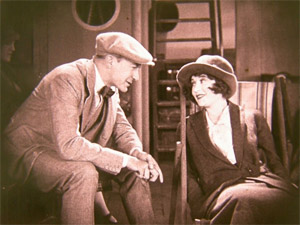By MCN Editor editor@moviecitynews.com
ACADEMY TO UNVEIL HITCHCOCK’S REDISCOVERED “THE WHITE SHADOW”
September 12, 2011
FOR IMMEDIATE RELEASE
 Beverly Hills, CA – The Academy of Motion Pictures Arts and Sciences will present the American re-premiere of the first three reels of “The White Shadow,” the 1924 movie thought to be the earliest surviving feature film work of Alfred Hitchcock, on Thursday, September 22, at 7:30 p.m. at the Samuel Goldwyn Theater in Beverly Hills. Following the screening, Oscar®-winning actress Eva Marie Saint, who starred in Hitchcock’s “North by Northwest,” will offer a description of the remaining scenes which are still lost. Michael Mortilla and Nicole Garcia will provide live musical accompaniment on piano and violin.
Beverly Hills, CA – The Academy of Motion Pictures Arts and Sciences will present the American re-premiere of the first three reels of “The White Shadow,” the 1924 movie thought to be the earliest surviving feature film work of Alfred Hitchcock, on Thursday, September 22, at 7:30 p.m. at the Samuel Goldwyn Theater in Beverly Hills. Following the screening, Oscar®-winning actress Eva Marie Saint, who starred in Hitchcock’s “North by Northwest,” will offer a description of the remaining scenes which are still lost. Michael Mortilla and Nicole Garcia will provide live musical accompaniment on piano and violin.
The evening also will include a screening of “Won in a Closet” (1914), a film starring and directed by Mabel Normand, and “Oil’s Well,” a Monty Banks comedy. Both films were part of the New Zealand Film Archive collection and have now been added to the collection of the Library of Congress and the Museum of Modern Art, respectively.
The tinted print of “The White Shadow,” an atmospheric melodrama starring Betty Compson in a dual role as twin sisters, one angelic and the other “without a soul,” was discovered during the National Film Preservation Foundation’s second round of research to identify prints of early American films held at the New Zealand Film Archive. It was among the many silent-era movies salvaged by New Zealand projectionist and collector Jack Murtagh. After Murtagh’s death in 1989, the highly flammable nitrate prints were sent to the New Zealand Film Archive for safekeeping by Tony Osborne, Murtagh’s grandson.
“The White Shadow” is among the “lost” films from the New Zealand Film Archive being preserved and accessed through the five major American film archives that are collaborating with the NFPF on the project: the Academy Film Archive, George Eastman House, the Library of Congress, the Museum of Modern Art, and the UCLA Film & Television Archive. The title is being preserved at Park Road Post Production in New Zealand, and the new preservation master and exhibition print will be added to the Academy Film Archive’s permanent collection.
This will be the Academy’s latest presentation in a screening series of archival rediscoveries unspooling under the banner “Lost and Found.”
Tickets to “Lost and Found: The White Shadow” are $5 for the general public and $3 for Academy members and students with a valid ID, and are available for purchase online at www.oscars.org, at the Academy’s box office (8949 Wilshire Boulevard, Monday through Friday, 9 a.m. to 5 p.m. ), or by mail. Doors will open at 6:30 p.m.
The Samuel Goldwyn Theater is located at the 8949 Wilshire Boulevard in Beverly Hills. For more information call (310) 247-3600 or visit www.oscars.org.
# # #
ABOUT THE ACADEMY
The Academy of Motion Picture Arts and Sciences is the world’s preeminent movie-related organization, with a membership of more than 6,000 of the most accomplished men and women working in cinema. In addition to the annual Academy Awards – in which the members vote to select the nominees and winners – the Academy presents a diverse year-round slate of public programs, exhibitions and events; provides financial support to a wide range of other movie-related organizations and endeavors; acts as a neutral advocate in the advancement of motion picture technology; and, through its Margaret Herrick Library and Academy Film Archive, collects, preserves, restores and provides access to movies and items related to their history. Through these and other activities the Academy serves students, historians, the entertainment industry and people everywhere who love movies.
FOLLOW THE ACADEMY
www.oscars.org
www.facebook.com/TheAcademy
www.youtube.com/Oscars
www.twitter.com/TheAcademy
# # #













